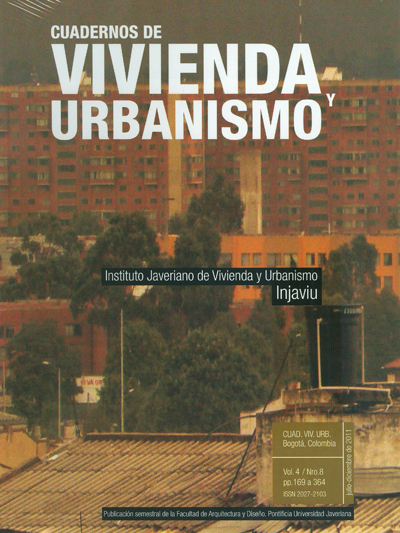Abstract
El presente trabajo investiga los diferentes mecanismos y dispositivos arquitectónicos que contribuyeron a la construcción del habitar moderno en la tipología de vivienda de departamentos en Buenos Aires, entre 1930 y 1960. Al mismo tiempo, observa y analiza la configuración de aquellos espacios constitutivos de la tipología y sus elementos determinantes, para establecer la relación entre dichos espacios y las nuevas prácticas de habitar. Los cambios en las costumbres sociales y culturales modificaron los modos de habitar y con esto los espacios de uso, mientras que las innovaciones en los usos determinaron una especialización de los locales. La modernización del hogar, que simplificó la disposición y el equipamiento junto con la incorporación de los avances tecnológicos, permitió que la vivienda moderna fuera confortable y eficiente. Finalmente, el trabajo estudia la influencia que la tipología de vivienda departamento tuvo en la estructura y la vida urbana, su capacidad de reorganización del tejido urbano y las relaciones socioespaciales que se desarrollaron en él.
This journal is registered under a Creative Commons Attribution 4.0 International Public License. Thus, this work may be reproduced, distributed, and publicly shared in digital format, as long as the names of the authors and Pontificia Universidad Javeriana are acknowledged. Others are allowed to quote, adapt, transform, auto-archive, republish, and create based on this material, for any purpose (even commercial ones), provided the authorship is duly acknowledged, a link to the original work is provided, and it is specified if changes have been made. Pontificia Universidad Javeriana does not hold the rights of published works and the authors are solely responsible for the contents of their works; they keep the moral, intellectual, privacy, and publicity rights.
Approving the intervention of the work (review, copy-editing, translation, layout) and the following outreach, are granted through an use license and not through an assignment of rights. This means the journal and Pontificia Universidad Javeriana cannot be held responsible for any ethical malpractice by the authors. As a consequence of the protection granted by the use license, the journal is not required to publish recantations or modify information already published, unless the errata stems from the editorial management process. Publishing contents in this journal does not generate royalties for contributors.


